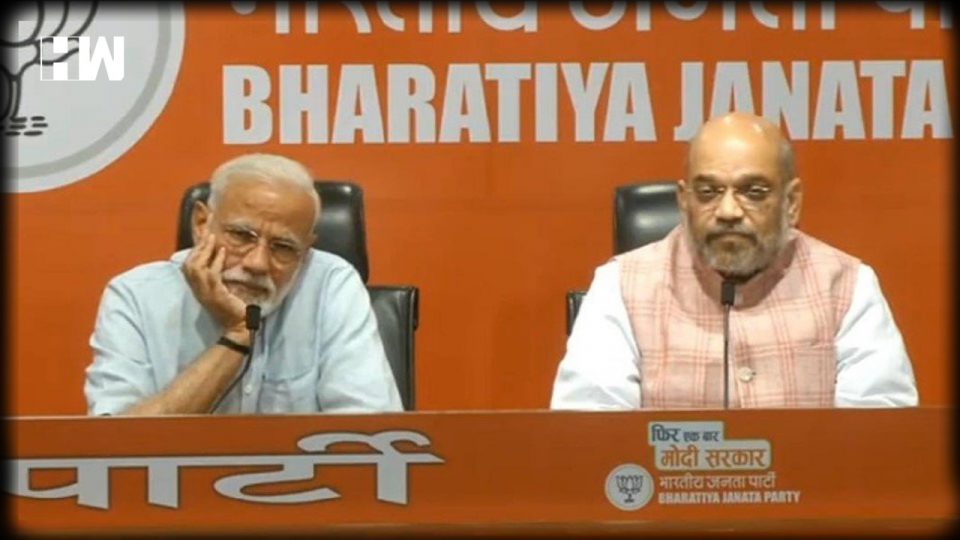Internet blockades and sedition cases in India in recent years have raised questions over the incumbent government.
Is the Internet a fundamental right?
Supreme Court (SC) hearing on the issue of restrictions in Kashmir concluded with SC ordering the Centre to file a review of restrictions imposed in Kashmir in one week. SC also made clear that the internet is a fundamental right under article 19 of the constitution. After abrogating Article 370 last year, the union government imposed a number of restrictions including the internet blockade. Even though the blockade in Kashmir has garnered attention, the Modi government has a history of cutting down internet services in several other regions of the country.
A leading news agency has reported that internet shutdowns were imposed 357 times all around the country since 2014. Terror activities and communal tensions are two major reasons for the shutting down of the internet.
India witnessed six internet shutdowns in 2014. The number went up to 14 in 2015. In 2016, the number rose to 31. There were 79 instances in 2017. The number went off the roof in 2018 with a total of 134 instances of internet shutdown. By 15th December of 2019, there were 93 instances of shutdowns. It followed by a large number of shutdowns during the anti-CAA protests all around the country.
From January to July of 2019, there were 120 internet shutdowns all over the world. Out of those 120, 80 were imposed in India. 67% of global internet shutdowns took place in Indian till July 2019.
Social media is a medium of dissent as well as communication for many in the country. The opposition has stressed over the fact that the blockades not only curb their right to speak their minds but also cut their communication with their acquaintances. After the Supreme court clearly stated that the internet is a fundamental right, the government’s frequent attempts to take it away from people is worrisome.

Also Read: Supreme Court sends notice to Centre regarding Article 370, told to reply in 7 days
Is Sedition an outdated law? Is UAPA the new sedition law?
The age-old British law has only thrived in India despite the British scrapping it in their own country.
35 sedition cases were registered in 2016. The sedition cases count in 2017 was 51. It rose to 70 in 2018. The numbers have doubled up in just 2 years.
Jharkhand topped the list after registering 17 cases of sedition, while Assam had the highest number of offenders — 27 of them booked in 17 cases. Jammu and Kashmir also saw an unprecedented rise with 12 cases of sedition registered in the state in 2018 as compared to only one in 2017.
 While there was a significant decline in cases registered for an offense against the state, the data further shows an increase in the cases registered under the Unlawful Activities Prevention Act (UAPA) and the Official Secrets Act (OSA).
While there was a significant decline in cases registered for an offense against the state, the data further shows an increase in the cases registered under the Unlawful Activities Prevention Act (UAPA) and the Official Secrets Act (OSA).
In 2018, 1,182 cases were registered under UAPA as compared to 901 cases in 2017. UAPA has a provision to detain and investigate an individual if a state has a doubt about his/her intentions. 18 cases were registered under OSA in 2017 which rose to 40 in 2018.
 The constant criticism that the government is subjected to for using institutions as a tool to curb dissent doesn’t seem exaggerated considering the numbers. Usage of internet blockade is viewed by many as a tool by the government to stop the flow of information. The law such as sedition has no place in a democracy. UAPA can be a lethal tool to shut the dissenters up by scaring them. The government is playing with laws that can backfire on them if they lose power. All they have to remember in the end is this line from the Spiderman Movie- “With great power, comes great responsibility.”
The constant criticism that the government is subjected to for using institutions as a tool to curb dissent doesn’t seem exaggerated considering the numbers. Usage of internet blockade is viewed by many as a tool by the government to stop the flow of information. The law such as sedition has no place in a democracy. UAPA can be a lethal tool to shut the dissenters up by scaring them. The government is playing with laws that can backfire on them if they lose power. All they have to remember in the end is this line from the Spiderman Movie- “With great power, comes great responsibility.”
As an independent media platform, we do not take advertisements from governments and corporate houses. It is you, our readers, who have supported us on our journey to do honest and unbiased journalism. Please contribute, so that we can continue to do the same in future.

